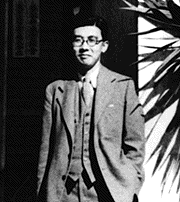Jeff Yang of the San Francisco Gate has written an article about how Steve Jobs Apple ethos was formed in large part because of his almost fetishistic devotion to former Sony CEO Masaru Ibuka. Ibuka didn’t worry about losing market share in the short run–he wanted, like Jobs subsequently would, to create transformative products and win the future. An excerpt:
“‘Ibuka was really the heart and soul of the company,’ says [Alan] Deutschman, who wrote about Sony’s elder statesman in his most recent book, Walk the Walk. ‘He was the one responsible for Sony’s sense of purpose. This was a company that was launched in a Tokyo that had been leveled by firebombing in World War II, that had experienced the kind of destruction associated with Hiroshima and Nagasaki, and whose residents were facing homelessness, hunger and desperation. And yet Ibuka laid out a mission statement for Sony that was aimed at changing the world.’
That statement was simple and to the point: ‘Sony will be the company that is most known for transforming the global image of Japanese goods as being of poor quality.’ It defined Sony by what it would not do — make bad products — making it something of an omission statement, if you will.
By way of example, Deutschman tells the story of how Sony entered the color TV marketplace, noting that in the Sixties, when color TV was going from 3% to 25% of the market, Sony was one of the few electronics companies that didn’t sell a color model. ‘People were telling Ibuka, ‘You have to come in to this market, everyone will take your market share,’ says Deutschman. ‘And Ibuka refused, saying, ‘No, we will only do great products. We will only do high quality goods. We will only do breakthrough technology.”
As a result, the company found itself in a precarious financial situation, losing out to its primary rivals — until it came upon the aperture-grille technology that Sony unveiled in 1966 as the core of the Trinitron TV. A full 25% brighter than its rivals, Trinitron became the best-selling color TV for the next quarter century.
‘At the time, Sony was committed to not releasing a crappy product just because the market was there; they waited until they had a truly revolutionary innovation, combined it with great design and then profited from it for long, long time,’ says Deutschman. ‘For decades, Sony was a perfect place for engineers to fully use their creativity, because it was focused on bringing real meaning and benefit to society by making great products.'”
Tags: Alan Deutschman, Jeff Yang, Masaru Ibuka, Steve Jobs


